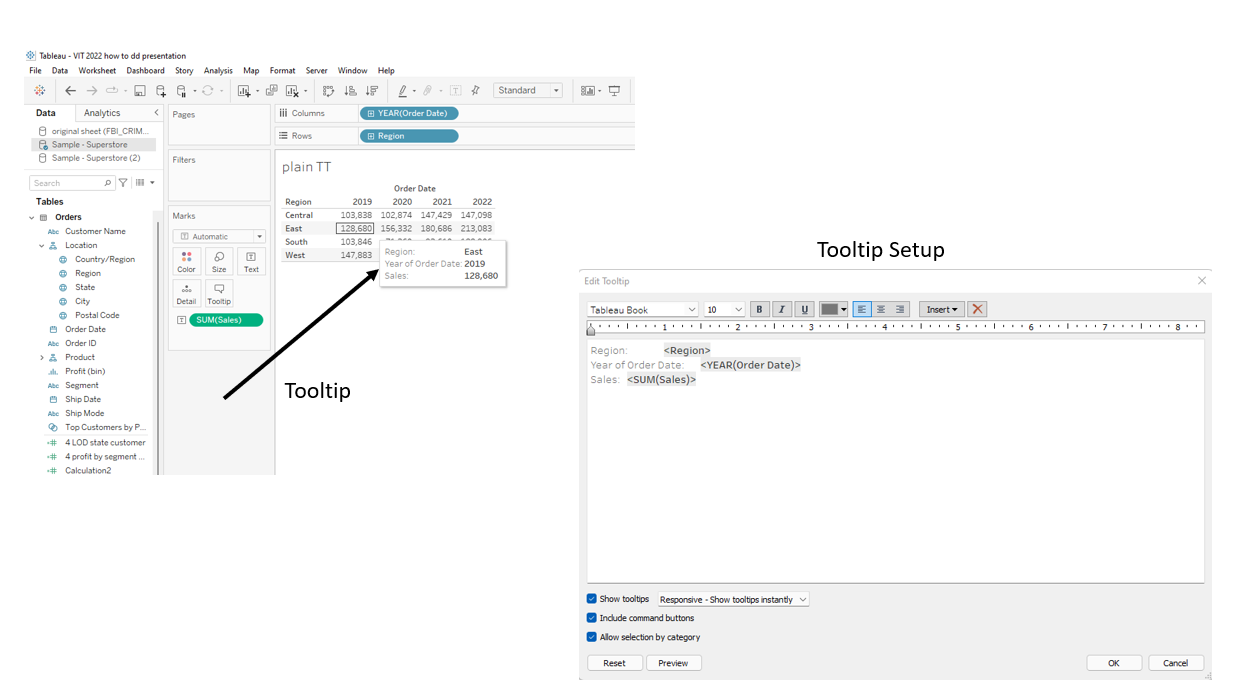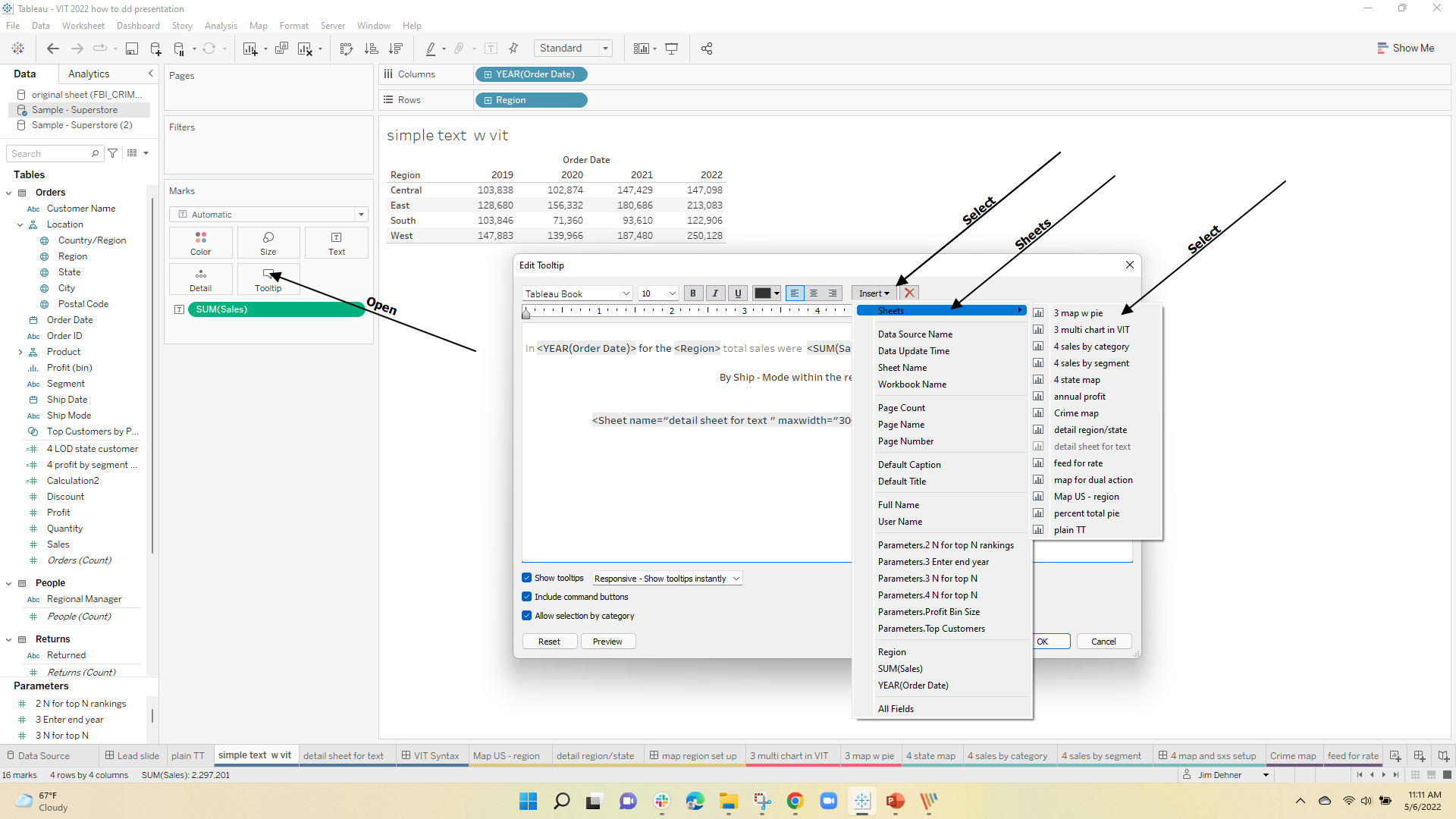Viz-In-Tooltip adds versatility and makes it easy for your user to get to the story hidden in your data. They are not difficult to use and let users see the detail without leaving the face of your worksheet – OK I'm sold – but what are they? (see the video : YouTube VIT link
Hovering over any mark on the worksheet opens the tooltip-

The tooltip provides basic information about the dimensions and measures in the view.
But the tooltip can also be customized :
- Customize the message
- Change the font and style
- Provide additional information
- AND … include a filtered PNG of other worksheets in your book (VIT)

Wow! Cool feature!
We will look at how to set up and customize the tooltip for sure but our focus will be on how to use the VIT feature to communicate better with the user.
To set up the VIT open the tooltip as usual and select "Insert" and "Sheets". A drop-down list will open and simply select the sheet you want to add :

Text will be added to the tooltip frame the tells Tableau which sheet to add, the size of the image to insert, and how to filter the worksheet before returning with an image (a PNG) –
Wait, did I say filter! Yes the default is to filter the target sheet by using all the combined dimensions from the selected mark (not just the filters on the source sheet)

That's all there is to it. So let's look at some more examples:
1 Changing the filter
We want to see a bar chart for all the states within a region when we hover over any state in the region. So we need to change the filter from "All Fields" to "Region"

The target sheet 'detail region/state' includes all states by region:

We want to see the state level detail so we only want to filter at the Region level – the default "All Fields" would filter to the state level.
2 Drill to lower levels in the data
You can also do the reverse and drill from summary levels to more detailed data using the VIT.
Hovering over a single region/segment mark brings up a state-level map where the percent of total sales by segment is presented as a pie chart – hover over a different segment and the pie adjusts

3 Side by Side VIT
VIT is not limited to a single image in the tooltip. Images from 2 sheets (or more) can be placed side-by-side by simply omitting a carriage return between their individual text streams:

4 Isolating a single item from the group
So far we have looked at using VIT to simply filter the portions of the target sheet.
I also like to use it to isolate single items in what would otherwise be very messy data. I start by creating a detail sheet that contains all the information for the entire data set – Don't worry, you are the only one that will see it in that form. Then use the VIT filter to select the single item in the data to be shown:

5 Dual Action VIT
For the last example, we will look at how to have the VIT present one worksheet on Hover and a different sheet when you click on the mark.
I apologize for the detail and highly recommend that you download the workbook from my Tableau Public site.
The goal – Hovering will return one worksheet but clicking will return another

Start on the line chart page by setting up a set on state and adding a set action

Next on the pie chart sheet include every state – we will isolate the "selected state" later

On the Map sheet, we will create a series of calculations that result in the tooltip text functions
first, we count the active states
Window_sum(countd([State]))=1
then use that count to swap out the sheet in the tooltip based on this formula
"//use a case statement on the boolean
CASE [1 window sum countd state tf]
when TRUE then "
when FALSE then "
end "
and set up the tooltip like this

Finally, set up 2 set actions as shown :
The first is used to place a single state in the "Selected Set" set based on Select (click)

The second changes the set based on Hover

and that will complete the setup
I hope this helped with understanding VIT and encourage you to try them out in your next viz –
The workbook with all the examples shown here can be found at Link to Workbook
Enjoy
Jim

